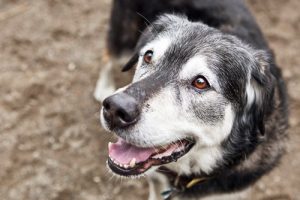When it Comes to Pet Lumps and Bumps, Should You Wait or Worry?
When it Comes to Pet Lumps and Bumps, Should You Wait or Worry?

One of the best parts of owning a pet is the mutually beneficial act of petting them. It feels good to them, of course, but snuggling and stroking a furry pet has proven to enhance human health, too.
Equally important during your daily cuddle-fests is the opportunity to feel for any pet lumps and bumps. To be sure, knowing exactly what is normal for your pet’s skin and body condition can go a long way to staying in front of developing problems.
What Is That?
It’s always worrisome to find lumps and bumps that weren’t there before. Sometimes, pet growths seem to appear overnight, but it’s not uncommon for pet lumps and bumps to sneak by undetected for weeks or months.
Pet lumps and bumps may be caused by wounds. After experiencing a bite from another animal, infection can develop under the puncture site. If you see this suddenly in your pet (and they are very sensitive to touch), they should be seen ASAP.
Taking Note
Pet owners may jot down some observations after a lump or bump has been discovered. You can even take a picture of the area on your pet’s body with an object that is similar in size, like a coin or ball. If your pet is uncharacteristically lethargy, has a poor appetite, and is showing other signs that they’re unwell, please schedule an appointment for them.
During their exam we’ll zero in on the precise location and size. Additionally, we may take note of the following possible characteristics:
- Is it on or under the skin?
- Is it hard or squishy?
- Is it red or irritated looking?
- Is it bumpy, smooth, raised up or flat?
- Does it move under pressure?
- Does it cause your pet pain when touched?
- Is there fluid present?
- Is it bleeding?
We may recommend various possible diagnostics to learn more about what’s growing on your pet. Fine needle aspiration can reveal what types of cells are present inside a lump or bump. Excisional biopsy removes the entire mass and allows for laboratory testing.
A Common Sign of Aging
Pet lumps and bumps are frequently addressed in older animals. In fact, growths such as warts, moles, skin tags, sebaceous gland tumors, cysts and histiocytoma are common signs of aging.
Lipomas, or benign, fatty tumors, may or may not cause your pet any discomfort. However, depending on their location, size, and growth patterns, lipomas may become malignant over time.
Diagnosing Pet Lumps and Bumps
Lumps and bumps in pets can also be explained by cancer. Mast cell tumors, squamous cell tumors, cutaneous hemangiosarcoma, and malignant melanoma are masses that can spread throughout a pet’s body. Because these masses spread quickly and can be difficult to surgically remove, pet owners should act quickly after the discovery of one or more growths.
The Outlook
At your pet’s exam, our team can answer questions about the possible causes and whether or not your pet’s health and comfort are at risk. Once we know what we’re dealing with we can develop a treatment plan for your pet.
The bottom line is that while pet lumps and bumps can be harmless, they are worthy of our attention. Please let us know how we can help!
